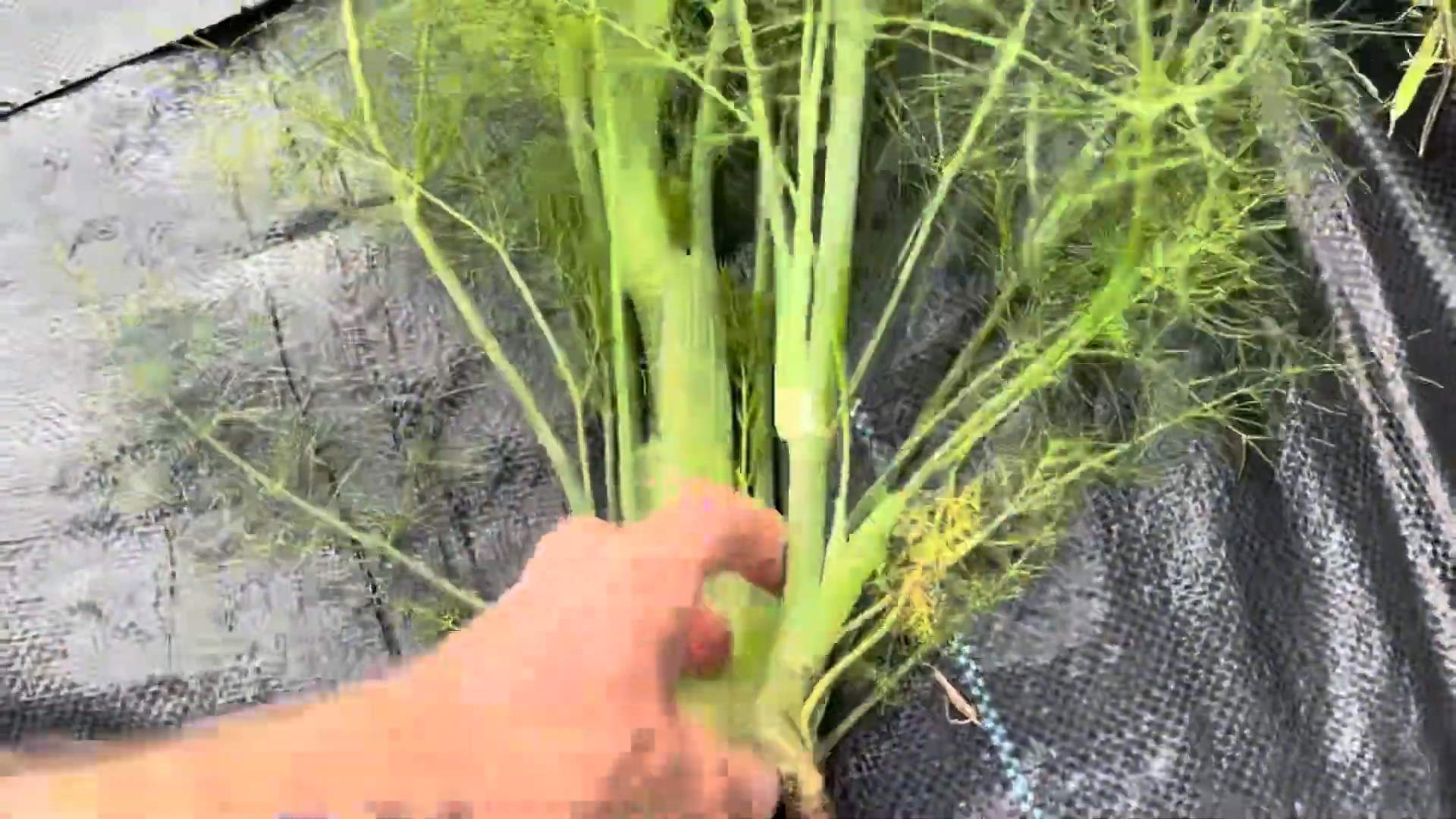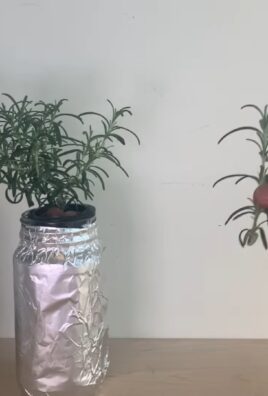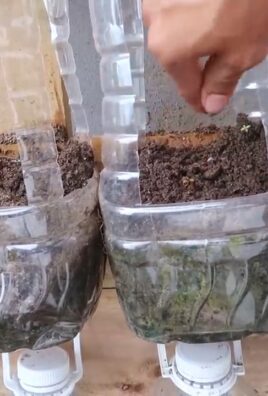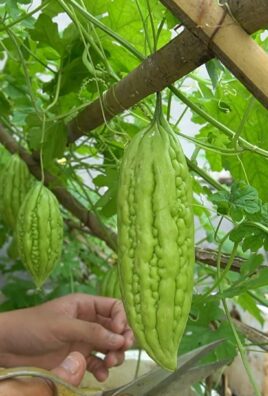Grow Fennel Indoors Successfully? Absolutely! Imagine fresh, aromatic fennel fronds gracing your dishes, even when the snow is falling outside. For centuries, fennel has been cherished not only for its culinary versatility but also for its medicinal properties. From ancient Roman banquets where it was believed to aid digestion to its modern-day use in everything from salads to soups, fennel has a rich and fascinating history.
But let’s face it, not everyone has a sprawling garden or the perfect climate to cultivate this delightful herb outdoors. That’s where the magic of indoor gardening comes in! I’m here to share some simple, yet effective, DIY tricks and hacks that will empower you to grow fennel indoors successfully, regardless of your experience level.
Why is this so important? Because having fresh herbs at your fingertips elevates your cooking, adds a touch of freshness to your home, and provides a rewarding connection to nature. Plus, store-bought fennel can be expensive and often lacks the vibrant flavor of homegrown. So, ditch the grocery store and let’s embark on this exciting journey to cultivate your own indoor fennel oasis! Get ready to unlock the secrets to a thriving indoor fennel garden – it’s easier than you think!

Growing Fennel Indoors: A Comprehensive DIY Guide
Hey there, fellow plant enthusiasts! Ever thought about bringing the licorice-y goodness of fennel into your home? Growing fennel indoors is totally achievable, and I’m here to walk you through every step. It’s a rewarding experience, and you’ll have fresh fennel fronds at your fingertips for salads, soups, and more!
Choosing the Right Fennel Variety
First things first, let’s talk about fennel varieties. While bulb fennel (the kind you see in the grocery store with the big bulb at the base) can be grown indoors, it’s a bit trickier. For indoor growing, I highly recommend focusing on **herb fennel**, also known as common fennel or sweet fennel. It’s primarily grown for its feathery leaves and seeds, which are easier to manage in a container.
Here’s a quick rundown:
* **Herb Fennel ( _Foeniculum vulgare_):** This is your best bet for indoor growing. It focuses on leaf and seed production, and it’s more compact than bulb fennel.
* **Bulb Fennel ( _Foeniculum vulgare var. azoricum_):** While possible to grow indoors, it requires a larger container and more attention to encourage bulb formation. It might not produce a substantial bulb indoors.
Materials You’ll Need
Before we dive into the planting process, let’s gather our supplies. Having everything ready will make the whole experience smoother.
* **Fennel Seeds:** Choose high-quality, organic fennel seeds for the best results. You can find these at most garden centers or online.
* **Potting Mix:** Use a well-draining potting mix specifically formulated for containers. Avoid using garden soil, as it can compact and hinder drainage.
* **Container:** Select a pot that’s at least 12 inches in diameter and 12 inches deep. This will give the fennel plant enough room to grow. Make sure the pot has drainage holes!
* **Grow Lights (Optional but Recommended):** While fennel loves sunlight, indoor light can be limited, especially during winter. Grow lights will supplement natural light and ensure healthy growth.
* **Watering Can or Spray Bottle:** For gentle watering.
* **Small Shovel or Trowel:** For planting the seeds.
* **Fertilizer (Optional):** A balanced liquid fertilizer can help boost growth, but it’s not essential.
Planting Your Fennel Seeds
Now for the fun part – planting! This is where your fennel journey truly begins.
1. **Prepare the Pot:** Fill your chosen container with the well-draining potting mix, leaving about an inch of space at the top. Gently pat down the soil to remove any large air pockets.
2. **Sow the Seeds:** Sprinkle the fennel seeds evenly over the surface of the soil. You don’t need to plant them too deep; about ¼ inch is perfect.
3. **Cover the Seeds:** Lightly cover the seeds with a thin layer of potting mix.
4. **Water Gently:** Use a watering can or spray bottle to gently moisten the soil. Be careful not to overwater, as this can cause the seeds to rot. The soil should be damp, not soggy.
5. **Provide Light and Warmth:** Place the pot in a warm location that receives plenty of sunlight. A south-facing window is ideal. If you’re using grow lights, position them a few inches above the soil surface.
6. **Maintain Moisture:** Keep the soil consistently moist but not waterlogged. Check the soil moisture daily and water when the top inch feels dry to the touch.
Caring for Your Indoor Fennel Plant
Once your fennel seeds have sprouted (usually within 7-14 days), it’s time to focus on providing the right care to help them thrive.
1. **Thin Seedlings (If Necessary):** If you have multiple seedlings growing close together, thin them out to allow each plant enough space to develop. Aim for about 2-3 inches between plants.
2. **Watering:** Water your fennel plant regularly, allowing the top inch of soil to dry out between waterings. Overwatering can lead to root rot, so be cautious.
3. **Lighting:** Fennel needs at least 6 hours of sunlight per day. If you’re not getting enough natural light, supplement with grow lights. I’ve found that using a full-spectrum LED grow light for 12-14 hours a day works wonders.
4. **Temperature:** Fennel prefers temperatures between 60-70°F (15-21°C). Avoid placing your plant near drafts or extreme temperature fluctuations.
5. **Fertilizing (Optional):** If you want to give your fennel plant a boost, you can fertilize it every 2-3 weeks with a balanced liquid fertilizer diluted to half strength. Follow the instructions on the fertilizer packaging.
6. **Pruning:** Regular pruning will encourage bushier growth. Pinch off the tips of the stems to promote branching. You can also harvest leaves as needed for culinary use.
7. **Pest Control:** Keep an eye out for common indoor plant pests like aphids, spider mites, and whiteflies. If you spot any pests, treat them with insecticidal soap or neem oil. I always prefer organic solutions whenever possible.
8. **Repotting (If Necessary):** As your fennel plant grows, it may eventually outgrow its container. If you notice the roots circling the bottom of the pot, it’s time to repot it into a larger container.
Harvesting Your Fennel
The best part of growing fennel indoors is, of course, harvesting and enjoying your fresh herbs!
1. **Harvesting Leaves:** You can start harvesting fennel leaves as soon as the plant is large enough to handle it, usually when it’s about 6-8 inches tall. Simply snip off the leaves with scissors or pruning shears. Harvest from the outer leaves first, leaving the inner leaves to continue growing.
2. **Harvesting Seeds:** If you want to harvest fennel seeds, allow the plant to flower. Once the flowers have dried and turned brown, you can collect the seeds. Cut off the seed heads and place them in a paper bag. Allow them to dry completely, then shake the bag to release the seeds.
3. **Using Your Harvest:** Fresh fennel leaves can be used in salads, soups, stews, and as a garnish. Fennel seeds can be used as a spice in various dishes or to make fennel tea.
Troubleshooting Common Issues
Even with the best care, you might encounter some challenges when growing fennel indoors. Here are a few common issues and how to address them:
* **Yellowing Leaves:** This can be caused by overwatering, underwatering, or nutrient deficiencies. Check the soil moisture and adjust your watering accordingly. If you suspect a nutrient deficiency, try fertilizing with a balanced liquid fertilizer.
* **Leggy Growth:** This is usually a sign of insufficient light. Move your plant to a brighter location or supplement with grow lights.
* **Pest Infestations:** As mentioned earlier, keep an eye out for common indoor plant pests. Treat them promptly with insecticidal soap or neem oil.
* **Slow Growth:** This can be caused by a variety of factors, including insufficient light, poor soil, or low temperatures. Make sure your plant is getting enough light, use a well-draining potting mix, and keep the temperature within the ideal range.
Encouraging Bulb Formation (For Bulb Fennel – More Challenging Indoors)
If you’re determined to try growing bulb fennel indoors, here are a few tips to encourage bulb formation:
1. **Choose a Large Container:** Bulb fennel needs plenty of space to develop its bulb. Use a container that’s at least 14-16 inches in diameter and 12 inches deep.
2. **Hill the Soil:** As the bulb starts to form, gradually hill the soil around it. This will help protect the bulb from sunlight and encourage it to grow larger.
3. **Provide Consistent Moisture:** Bulb fennel needs consistent moisture to develop properly. Water regularly, but avoid overwatering.
4. **Be Patient:** Bulb fennel takes longer to mature than herb fennel. Be patient and give it plenty of time to develop. Don’t expect a huge bulb like you’d find in the store; indoor-grown bulbs tend to be smaller.
Final Thoughts
Growing fennel indoors is a fun and rewarding project that can provide you with fresh herbs year-round. With a little care and attention, you can enjoy the delicious flavor and aroma of fennel right in your own home. Don’t be afraid to experiment and learn as you go. Happy gardening!

Conclusion
So, there you have it! Growing fennel indoors successfully is not only achievable, but it can also be a deeply rewarding experience. We’ve walked through the steps, from selecting the right variety to providing the optimal growing conditions, and addressed potential challenges along the way. But why should you embark on this indoor gardening adventure?
First and foremost, having fresh fennel readily available at your fingertips is a game-changer for any home cook. Imagine the convenience of snipping off a few fronds to add a burst of anise-like flavor to your salads, soups, or seafood dishes. No more last-minute trips to the grocery store or settling for wilted, lackluster fennel from the produce aisle. The vibrant, aromatic flavor of homegrown fennel is simply unmatched.
Beyond the culinary benefits, growing fennel indoors offers a therapeutic and aesthetically pleasing addition to your living space. The feathery foliage of the plant adds a touch of greenery and tranquility, creating a calming atmosphere. Nurturing a plant from seed to harvest can be incredibly satisfying, providing a sense of accomplishment and connection to nature, especially during the colder months when outdoor gardening is limited.
But the real magic lies in the versatility of this DIY project. Feel free to experiment with different varieties of fennel to discover your personal favorite. Consider growing Florence fennel for its bulb, which can be sliced and roasted, grilled, or added to salads for a crunchy, refreshing bite. Or, focus on growing common fennel primarily for its flavorful fronds and seeds.
Variations to consider:
* Hydroponics: For a more advanced approach, try growing fennel hydroponically. This soilless method can accelerate growth and reduce the risk of pests and diseases.
* Container Gardening: Experiment with different container sizes and materials to find what works best for your space and aesthetic preferences. Terracotta pots offer excellent drainage, while self-watering containers can simplify maintenance.
* Companion Planting: While growing indoors limits the scope of companion planting, you can still strategically place your fennel near other herbs or vegetables that benefit from its presence. For example, fennel is said to deter aphids and other pests from nearby plants.
Growing fennel indoors successfully is a journey of discovery. Don’t be afraid to make mistakes and learn from them. Observe your plants closely, adjust your watering and lighting as needed, and most importantly, enjoy the process.
We are confident that with a little patience and attention, you can cultivate a thriving fennel plant indoors and reap the rewards of fresh, flavorful produce all year round. So, grab your seeds, prepare your potting mix, and get ready to embark on this exciting gardening adventure.
We can’t wait to hear about your experiences! Share your photos, tips, and challenges in the comments below. Let’s create a community of indoor fennel growers and inspire others to discover the joys of homegrown herbs and vegetables. Happy gardening!
Frequently Asked Questions (FAQ)
Q: What is the best type of fennel to grow indoors?
A: While both Florence fennel (bulb fennel) and common fennel can be grown indoors, common fennel is generally easier to cultivate for its fronds and seeds. Florence fennel requires more space and specific conditions to develop a substantial bulb. If you’re a beginner, starting with common fennel is recommended. However, if you have ample space and are willing to provide the necessary care, you can certainly try growing Florence fennel indoors. Look for compact varieties specifically bred for container gardening.
Q: How much sunlight does indoor fennel need?
A: Fennel thrives in bright, direct sunlight. Ideally, it needs at least 6-8 hours of sunlight per day. If you don’t have a south-facing window that provides sufficient light, consider using grow lights. LED grow lights are energy-efficient and can provide the full spectrum of light that fennel needs to flourish. Position the grow lights a few inches above the plants and adjust the height as they grow. Rotate the plants regularly to ensure even light exposure on all sides.
Q: What kind of soil is best for growing fennel indoors?
A: Fennel prefers well-draining soil that is rich in organic matter. A good potting mix for fennel should consist of a combination of peat moss, perlite, and vermiculite. You can also add compost or aged manure to improve the soil’s fertility and drainage. Avoid using heavy clay soil, as it can become waterlogged and lead to root rot. Ensure that your container has drainage holes to prevent water from accumulating at the bottom.
Q: How often should I water my indoor fennel plant?
A: Water your fennel plant when the top inch of soil feels dry to the touch. Avoid overwatering, as this can lead to root rot. Water deeply, allowing the excess water to drain out of the bottom of the container. During the growing season (spring and summer), you may need to water more frequently than during the dormant season (fall and winter). Check the soil moisture regularly and adjust your watering schedule accordingly.
Q: How do I harvest fennel fronds and seeds?
A: You can start harvesting fennel fronds as soon as the plant has established itself and has produced several sets of leaves. Snip off the fronds near the base of the plant, being careful not to remove more than one-third of the foliage at a time. This will allow the plant to continue growing and producing new fronds. To harvest fennel seeds, allow the flower heads to dry completely on the plant. Once the seeds are brown and dry, you can cut off the flower heads and shake them into a paper bag to collect the seeds.
Q: What are some common pests and diseases that affect indoor fennel?
A: While growing fennel indoors reduces the risk of pest infestations, it’s still important to be vigilant. Common pests that may affect indoor fennel include aphids, spider mites, and whiteflies. These pests can be controlled with insecticidal soap or neem oil. Root rot is a common disease that can affect fennel if the soil is not well-draining or if the plant is overwatered. To prevent root rot, ensure that your container has drainage holes and avoid overwatering.
Q: Can I grow fennel from seed indoors?
A: Yes, growing fennel from seed indoors is a great way to start your indoor garden. Sow the seeds in a seed-starting tray or small pots filled with seed-starting mix. Keep the soil moist and warm, and provide plenty of light. Once the seedlings have developed a few sets of true leaves, you can transplant them into larger containers.
Q: How do I encourage bulb development in Florence fennel grown indoors?
A: Encouraging bulb development in Florence fennel grown indoors can be challenging, but it’s not impossible. Provide the plant with plenty of sunlight, well-draining soil, and regular fertilization. Hill the soil around the base of the bulb as it grows to encourage it to swell. You can also try pinching off the flower stalks to redirect the plant’s energy into bulb development. However, keep in mind that indoor-grown Florence fennel may not produce as large of a bulb as outdoor-grown fennel.
Q: Is it necessary to fertilize indoor fennel?
A: Yes, fertilizing indoor fennel is important to provide the plant with the nutrients it needs to thrive. Use a balanced liquid fertilizer diluted to half strength every 2-3 weeks during the growing season. Avoid over-fertilizing, as this can lead to leggy growth and reduced flavor. You can also amend the soil with compost or aged manure to provide a slow-release source of nutrients.
Q: My fennel plant is bolting (flowering prematurely). What should I do?
A: Bolting in fennel can be caused by stress, such as high temperatures, lack of water, or poor soil. Once a fennel plant bolts, the leaves can become bitter. If your fennel plant is bolting, try to identify and address the underlying cause. Ensure that the plant is receiving adequate water and sunlight, and that the soil is well-draining. You can also try pinching off the flower stalks to encourage the plant to produce more leaves.




Leave a Comment